Washing the mattress pad in the washing machine
 The function of the mattress cover is to protect the product from excess moisture, dust, bacteria and other things. However, if you do not take care of it properly, everything will be quite the opposite: the condition of the mattress will worsen. Hence the questions: is it possible to wash the mattress cover in the washing machine, then how to dry and iron it, especially if the product is fancy?
The function of the mattress cover is to protect the product from excess moisture, dust, bacteria and other things. However, if you do not take care of it properly, everything will be quite the opposite: the condition of the mattress will worsen. Hence the questions: is it possible to wash the mattress cover in the washing machine, then how to dry and iron it, especially if the product is fancy?
First we study the shortcut
Good old tags are sewn for a reason. A set of badges on them is the result of long and painstaking work, checks, tests and from the manufacturer. As a rule, the label reflects all the necessary care information: is it possible to wash, how to wash, etc.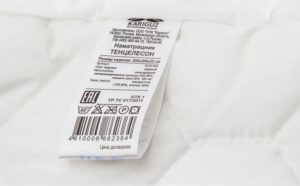
If, for some reason, the tag is no longer there (you cut it and threw it away when you bought it, for example), try to find the packaging from the mattress cover, where the main information is often printed, or some booklet that may have been with the mattress and preserved.
The frequency of washing is a purely individual phenomenon. It all depends on who is sleeping on the mattress, how he is sleeping, etc. For example, if a sheet or blanket does not spread on top, anything, of course, you need to stretch the mattress cover more often, because the human body contains particles of various impurities on it. In this case, wash the mattress cover with bedding. It is also often necessary to wash products on which people with excessive sweating sleep. In other cases, the mattress cover can be washed once a quarter or even every six months, or in the case of single serious contaminants.
Wash the moisture resistant product
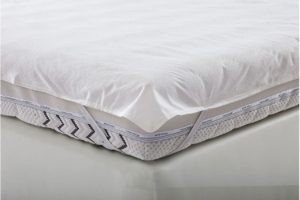 The concept of "moisture resistance" immediately causes associations that prohibit washing. However, in vain. It is possible and even necessary to wash such a product in a typewriter if the manufacturer’s label does not prohibit such a procedure. Why can some waterproof covers be washed and others not? The thing is their complex structure: one of the layers is a polyurethane membrane, and the remaining layers are diverse and differ from manufacturer to manufacturer. Some of them are suitable for automatic washing, while some are not. If the label does not show a hint of a ban on washing, follow these rules:
The concept of "moisture resistance" immediately causes associations that prohibit washing. However, in vain. It is possible and even necessary to wash such a product in a typewriter if the manufacturer’s label does not prohibit such a procedure. Why can some waterproof covers be washed and others not? The thing is their complex structure: one of the layers is a polyurethane membrane, and the remaining layers are diverse and differ from manufacturer to manufacturer. Some of them are suitable for automatic washing, while some are not. If the label does not show a hint of a ban on washing, follow these rules:
- wash at the coldest water temperature - a limit of 40 degrees;
- no bleaches, rinses, conditioners and other aggressive household chemicals; find the most gentle means on your shelf, better - something to care for children's things;
- it is generally better to wash off small contaminants with ordinary soap, for reliability you can use a household one;
- wash the product separately from other things;
- the mode should also be the most gentle, select Delicate or Hand wash, which does not provide for either spinning or drying.
You can only press the mattress cover by hand! Dry - in a dark room away from sources of heat and light. However, a very low temperature is also not welcome.
Important! As for ironing, it is not recommended to iron a waterproof mattress cover. But, in general, you don’t need ironing. Due to the layer of polyurethane, the product practically does not wrinkle during washing, especially if you gently squeeze it manually.
We take into account the characteristics of the material
As you probably already understood, there are three types of mattress covers: synthetic, semi-synthetic and purely natural. Of course, the main parameters of washing depend on the material.
- Covers made of cotton and other natural fabrics require washing in cold water, as hot water can cause shrinkage. The optimum temperature is 30-40 degrees.
- Mattress covers with the addition of bamboo need the most gentle washing. Of course, no spin and dryers! Even squeezing such a mattress manually, try not to exert too much effort and twist the product.
- The most unpretentious material is microfiber.She survives temperatures up to 60 degrees and calmly tolerates ordinary powders and even bleaches.
Note! If you are not sure about the material of your mattress cover, follow the general washing rules described in paragraph above.
If the material contains wool
In general, there should not be a problem with the automatic washing of the mattress cover, especially the woolen one, since almost any automatic washing device has a special program. Wool can act as a filler, as well as upholstery, be camel or sheep. It does not matter.
The main thing, in this case, is not to set the spin or dry mode. You need to squeeze the product purely by hand and very gently, otherwise the fibers will be damaged, and the mattress cover will become unusable.
If the pollution is local, it is better to rub the stain by hand using soap. Washing is necessary if the mattress pad smells unpleasant, and the wool absorbs odors very much.
Thick mattress toppers
Thick foam or latex covers cannot be washed automatically! The same applies to coconut toppers. It is better to buy a mattress with similar characteristics and put on a regular cover, then there will be less difficulties.
As for drying, it is not recommended to hang mattress covers: it is better to lay them horizontally and straighten them well. In small apartments, this is not very convenient, but there is nowhere to go.
Removing complex spots
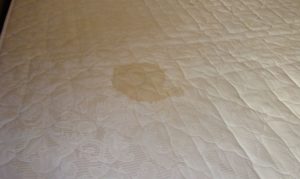 Of course, if the stain is small, and the rest of the cover is clean, you need to know how to remove such dirt manually.
Of course, if the stain is small, and the rest of the cover is clean, you need to know how to remove such dirt manually.
- Stains from urine are usually removed the first time with cold water and household soap. In extreme cases, you can prepare a solution of lemon and salt, leave for three hours and rinse. And there is no trace left!
- Blood. Blood is harder. A fresh stain is removed almost instantly by a stream of running cold water. But if the pollution is old, you will have to apply a lot of stain removers.
- Coffee and tea stains are easily removed with vinegar. True, for some time it will be unpleasant to smell, but it will quickly disappear.
Do not allow serious stains to enter the fabric. Otherwise, it will be much harder and more expensive to bring them out.
Interesting:
Reader Comments
- Share your opinion - leave a comment
Headings
Washing machine repair


For buyers
For users

Dishwasher


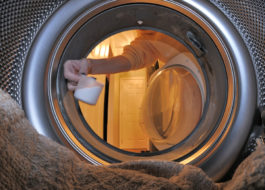
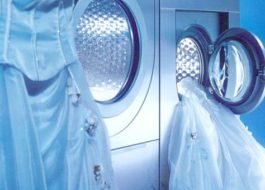
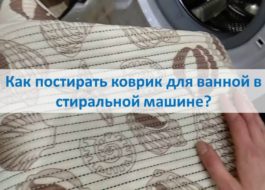

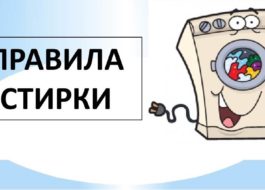











Add a comment